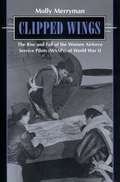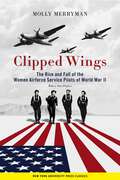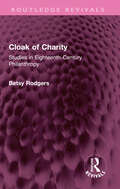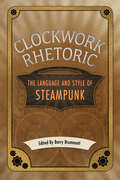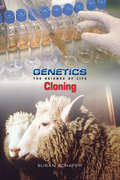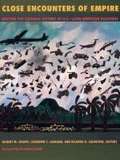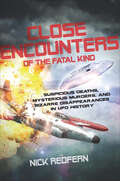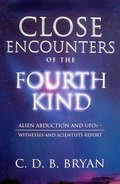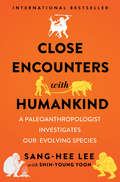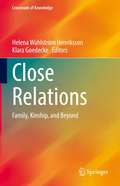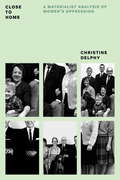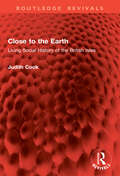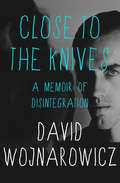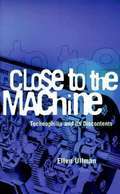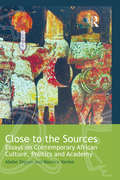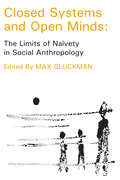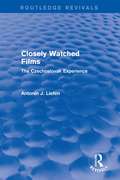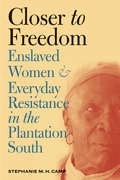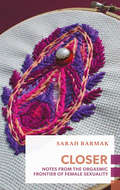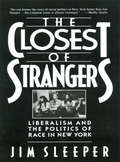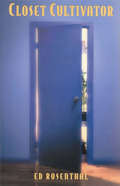- Table View
- List View
Clipped Wings: The Rise and Fall of the Women Airforce Service Pilots (WASPs) of World War II
by Molly MerrymanDuring World War II, all branches of the military had women's auxiliaries. Only the Women Airforce Service Pilot (WASP) program, however, was comprised entirely of women who flew dangerous missions more commonly associated with and desired by men. Within military hierarchies, the World War II pilot was projected as the most dashing and desirable of servicemen. "Flyboys" were the daring elite of the United States military. More than the WACs (Army), WAVES (Navy), SPARS (Coast Guard), or Women Marines, the WASPs directly challenged these assumptions of male supremacy in wartime culture. WASPs flew the fastest fighter planes and heaviest bombers; they test-piloted experimental models and worked in the development of weapons systems. Yet the WASPs were the only women's auxiliary within the armed services of World War II that was not militarized. In Clipped Wings, Molly Merryman draws upon military documents (many of which were declassified only in the 1980s), congressional records, and interviews with the women who served as WASPs during World War II, to trace the history of the over 1,000 pilots who served their country as the first women to fly military planes. She examines the social pressures which culminated in their disbandment in 1944-even though a wartime need for their services still existed-and documents their struggles and eventual success, in 1977, to gain military status and receive veterans benefits.
Clipped Wings: The Rise and Fall of the Women Airforce Service Pilots (WASPs) of World War II (WASPs)
by Molly MerrymanRevives the overlooked stories of pioneering women aviators, who are also featured in the forthcoming documentary film Coming Home: Fight for a LegacyDuring World War II, all branches of the military had women's auxiliaries. Only the Women Airforce Service Pilots (WASP) program, however, was made up entirely of women who undertook dangerous missions more commonly associated with and desired by men. Within military hierarchies, the World War II pilot was perceived as the most dashing and desirable of servicemen. "Flyboys" were the daring elite of the United States military. More than the WACs (Army), WAVES (Navy), SPARS (Coast Guard), or Women Marines, the WASPs directly challenged these assumptions of male supremacy in wartime culture. WASPs flew the fastest fighter planes and heaviest bombers; they test-piloted experimental models and worked in the development of weapons systems. Yet the WASPs were the only women's auxiliary within the armed services of World War II that was not militarized. In Clipped Wings, Molly Merryman draws upon military documents—many of which weren’t declassified until the 1990s—congressional records, and interviews with the women who served as WASPs during World War II to trace the history of the over one thousand pilots who served their country as the first women to fly military planes. She examines the social pressures that culminated in their disbandment in 1944—even though a wartime need for their services still existed—and documents their struggles and eventual success, in 1977, to gain military status and receive veterans’ benefits.In the preface to this reissued edition, Merryman reflects on the changes in women’s aviation in the past twenty years, as NASA’s new Artemis program promises to land the first female astronaut on the moon and African American and lesbian women are among the newest pilot recruits. Updating the story of the WASPs, Merryman reveals that even in the past few years there have been more battles for them to fight and more national recognition for them to receive. At its heart, the story of the Women Airforce Service Pilots is not about war or planes; it is a story about persistence and extraordinary achievement. These accomplished women pilots did more than break the barriers of flight; they established a model for equality.
Clitso Dedman, Navajo Carver: His Art and His World
by Rebecca M. ValetteRebecca Valette&’s Clitso Dedman, Navajo Carver is the first biography of artist Clitso Dedman (1876–1953), one of the most important but overlooked Diné (Navajo) artists of his generation. Dedman was born to a traditional Navajo family in Chinle, Arizona, and herded sheep as a child. He was educated in the late 1880s and early 1890s at the Fort Defiance Indian School, then at the Teller Institute in Grand Junction, Colorado. After graduation Dedman moved to Gallup, New Mexico, where he worked in the machine shop of the Atchison, Topeka, and Santa Fe Railway before opening his first of three Navajo trading posts in Rough Rock, Arizona. After tragedy struck his life in 1915, he moved back to Chinle and abruptly changed careers to become a blacksmith and builder. At age sixty, suffering from arthritis, Dedman turned his creative talent to wood carving, thus initiating a new Navajo art form. Although the neighboring Hopis had been carving Kachina dolls for generations, the Navajos traditionally avoided any permanent reproduction of their Holy People, and even of human figures. Dedman was the first to ignore this proscription, and for the rest of his life he focused on creating wooden sculptures of the various participants in the Yeibichai dance, which closed the Navajo Nightway ceremony. These secular carvings were immediately purchased and sold to tourists by regional Indian traders. Today Dedman&’s distinctive and highly regarded work can be found in private collections, galleries, and museums, such as the Navajo Nation Museum at Window Rock, the California Academy of Sciences in San Francisco, and the Arizona State Museum in Tucson. Clitso Dedman, Navajo Carver, with its extensive illustrations, is the story of a remarkable and underrecognized figure of twentieth-century Navajo artistic creation and innovation.
Cloak of Charity: Studies in Eighteenth-Century Philanthropy (Routledge Revivals)
by Betsy RodgersFirst published in 1949, Cloak of Charity provides a short history of philanthropy in the eighteenth-century. The author asserts that the history of charity is the history of the changes which have occurred in the attitude of the rich towards the poor. The character of philanthropy changed considerably during the course of the eighteenth-century and it is this change that the book traces. This book will be of interest to students of history, sociology and religion.
Clockwork Rhetoric: The Language and Style of Steampunk
by Barry BrummettThis unique book explores how the aesthetic and cultural movement “Steampunk” persuades audiences and wins new acolytes. Steampunk is an aesthetic style grounded in the Victorian era, in clothing and accoutrements modeled on a heightened and hyper-extended age of steam. In addition to its modeling of attire and other symbolic trappings, what is most distinctive is its adherents' use of a machined aesthetic based on steam engines and early electrical machinery—gears, pistons, shafts, wheels, induction motors, clockwork and so forth. Precursors to steampunk can be found in the works of Jules Verne and H. G. Wells. The imagery of the American West contributed to the aesthetic—revolvers, locomotives, and rifles of the late nineteenth century. Among young people, steampunk has found common aesthetic cause with Goth style. Examples from literature and popular culture include William Gibson's fiction, China Miéville's novels, the classic film Metropolis, and the BBC series Doctor Who. This volume recognizes that steampunk, a unique popular culture phenomenon, presents a prime opportunity for rhetorical criticism. Steampunk's art, style, and narratives convey complex social and political meanings. Chapters in Clockwork Rhetoric explore topics ranging from jewelry to Japanese anime to contemporary imperialism to fashion. Throughout, the book demonstrates how language influences consumers of steampunk to hold certain social and political attitudes and commitments.
Cloning: The Science Of Life
by Susan SchaferThis book provides in-depth explorations of genetic cloning, including the history of cloning and the types of artificial cloning for both plants and animals, with fascinating examples. It also explains the possibility of using the gene therapy to cure diseases.
Close Encounters of Empire: Writing the Cultural History of U.S.-Latin American Relations
by Gilbert M. Joseph Ricardo D. Salvatore Catherine C. LegrandNew concerns with the intersections of culture and power, historical agency, and the complexity of social and political life are producing new questions about the United States' involvement with Latin America. Turning away from political-economic models that see only domination and resistance, exploiters and victims, the contributors to this pathbreaking collection suggest alternate ways of understanding the role that U.S. actors and agencies have played in the region during the postcolonial period.Exploring a variety of nineteenth- and twentieth-century encounters in Latin America, these theoretically engaged essays by distinguished U.S. and Latin American historians and anthropologists illuminate a wide range of subjects. From the Rockefeller Foundation's public health initiatives in Central America to the visual regimes of film, art, and advertisements; these essays grapple with new ways of conceptualizing public and private spheres of empire. As such, Close Encounters of Empire initiates a dialogue between postcolonial studies and the long-standing scholarship on colonialism and imperialism in the Americas as it rethinks the cultural dimensions of nationalism and development.
Close Encounters of the Fatal Kind: Suspicious Deaths, Mysterious Murders, and Bizarre Disappearances in UFO History
by Nick RedfernFrom a journalist specializing in conspiracy theories, an examination of mysterious deaths and missing persons related to sightings of UFO phenomena.Everyone has heard of Close Encounters of the Third Kind. But what about close encounters of the fatal kind? The field of UFOs is rife with unsettling examples of suspicious deaths. Accounts of accidents that might not have been accidents after all, abound. Researchers and witnesses have vanished, never to be seen again. Conveniently timed heart attacks are reported. Out-of-the-blue suicides that, upon investigation, bear the distinct hallmarks of murder, are all too common. And grisly deaths at the hands of both extraterrestrials and government agents have occurred. Highlights of Close Encounters of the Fatal Kind include:The strange saga of the incredible melting manThe UFO-related death of the first U.S. Secretary of Defense, James ForrestalThe mysterious disappearances of military pilots and their connection to UFOsThe connections between national security and the sudden deaths of UFO investigatorsGetting too close to the cosmic truth about alien abductionsRoswell, and what the government really knows about UFOs can—clearly—be a deadly businessThe government’s latest admission of the existence of Area 51 is barely the tip of a very big iceberg.
Close Encounters of the Fourth Kind: Alien Abduction and UFOs
by C. D. B. BryanA serious, explicit, riveting investigation into the bizarre world of UFOs and alien abduction. At its center is a 5-day UFO conference at MIT, under the chairmanship of a physicist from MIT and a psychiatrist from Harvard. For 5 days a mixed group of delegates asked the questions: Do UFOs exist? Is it possible to believe that aliens have landed on earth and abducted ordinary men and women to experiment on them? Bryan attended the conference and met, interviewed and listened to the testimony of psychiatrists, researchers, hypnotherapists, physicists, and folklorists. Includes the experiences of abductees who came forward to tell their stories in chilling detail.
Close Encounters with Addiction
by Gabor MatéClose Encounters With Addiction is a lecture Dr. Gabor Maté gave in Los Angeles in April 2011. He talks about his experience as a physician and how many of his patients suffer from mental illness, drug addiction and HIV, or all three.
Close Encounters with Humankind: A Paleoanthropologist Investigates Our Evolving Species
by Sang-Hee Lee Shin-Young YoonIn this captivating bestseller, Korea’s first paleoanthropologist offers fresh insights into humanity’s dawn and evolution. What can fossilized teeth tell us about the life expectancy of our ancient ancestors? How did farming play a problematic role in the history of human evolution? How can simple geometric comparisons of skull and pelvic fossils suggest a possible origin to our social nature? And what do we truly have in common with the Neanderthals? In this captivating international bestseller, Close Encounters with Humankind, Korea’s first paleoanthropologist, Sang-Hee Lee, explores some of our greatest evolutionary questions from new and unexpected angles. Through a series of entertaining, bite-sized chapters, we gain fresh perspectives into our first hominin ancestors and ways to challenge perceptions about the traditional progression of evolution. By combining anthropological insight with exciting, cutting-edge research, Lee’s surprising conclusions shed new light on our beginnings and connect us to a faraway past. For example, our big brains may have served to set our species apart and spur our societal development, but perhaps not in the ways we have often assumed. And it’s possible that the Neanderthals, our infamous ancestors, were not the primitive beings portrayed by twentieth-century science. With Lee as our guide, we discover that from our first steps on two feet to our first forays into toolmaking and early formations of community, we have always been a species of continuous change. Close Encounters with Humankind is the perfect read for anyone curious about where we came from and what it took to get us here. As we mine the evolutionary path to the present, Lee helps us to determine where we are heading and tackles one of our most pressing scientific questions—does humanity continue to evolve?
Close Relations: Family, Kinship, and Beyond (Crossroads of Knowledge)
by Helena Wahlström Henriksson Klara GoedeckeThis book speaks to the meanings and values that inhere in close relations, focusing on ‘family’ and ‘kinship’ but also looking beyond these categories. Multifaceted, diverse and subject to constant debate, close relations are ubiquitous in human lives on embodied as well as symbolic levels. Closely related to processes of power, legibility and recognition, close relations are surrounded by boundaries that both constrain and enable their practical, symbolical and legal formation. Carefully contextualising close relations in relation to different national contexts, but also in relation to gender, sexuality, race, religion and dis/ability, the volume points to the importance of and variations in how close relations are lived, understood and negotiated.Grounded in a number of academic areas and disciplines, ranging from legal studies, sociology and social work to literary studies and ethnology, this volume also highlights the value of using inter- and multidisciplinary scholarly approaches in research about close relations.Chapter 11 is available open access under a Creative Commons Attribution 4.0 International License via link.springer.com.
Close the Gap & Get Your Share: How Immigrants and Their Families Can Build and Protect Generational Wealth in the US
by Julio Cacho Cole ConklingFor immigrants, their descendants, and anyone else looking to learn the unbiased truth about investing, Close the Gap & Get Your Share is a step-by-step guide to generating and passing on wealth in the US. Despite the American Dream&’s promises of prosperity and security, many immigrants still discover a seemingly insurmountable wealth gap upon their arrival to the United States. From Dr. Julio Cacho, Cole Conkling, and Juan Carlos Herrera, managing directors of Inscription Capital, Close the Gap & Get Your Share is a crucial resource that explains US-based investing in a way that makes sense to immigrants (as well as novice investors) and allows them to attain financial prosperity—without jeopardizing their families&’ existing resources. This book does away with the usual Wall Street practice of overcomplicating investment advice in favor of fact-based, straightforward strategies that put the reader&’s financial well-being first. Drawing on the authors&’ combined four decades of investment experience, Close the Gap & Get Your Share teaches immigrants and their families how to: Overcome hidden and unnecessary risks common for immigrants and novice investors Invest in practice, including how to properly balance risk and return Recognize and understand behavioral biases and overcome them to achieve long-term financial security For all generations of immigrants and non-immigrants alike motivated to grow their wealth and pass it on, Close the Gap & Get Your Share is a robust guide to closing the ever-growing wealth gap with accessible and distilled financial literacy and strategy.
Close to Home: A Materialist Analysis of Women's Oppression
by Christine Delphy Rachel Hills Diana LeonardClassic analysis of gender relations and patriarchy under capitalism Close to Home is the classic study of family, patriarchal ideologies, and the politics and strategy of women's liberation. On the table in this forceful and provocative debate are questions of whether men can be feminists, whether "bourgeois" and heterosexual women are retrogressive members of the women's movement, and how best to struggle against the multiple oppressions women endure.Rachel Hills's foreword to this new edition explores how Christine Delphy's analysis of marriage as the institution behind the exploitation of unpaid women's labor is as radical and relevant today as it ever was.From the Trade Paperback edition.
Close to the Earth: Living Social History of the British Isles (Routledge Revivals)
by Judith CookFirst published in 1984, Close to the Earth is a record of a vanishing age in Britain, of working communities and working individuals who made their living from the land, the rivers and the sea. It is based on conversations and personal memories collected for over twenty years and is illustrated with many contemporary photographs of the times remembered. The people Judith Cook talked to—who among other things mined, fished, worked the land and brewed ale, and worked in stone and slate—lived through an era which spanned man’s first flight and the first landing on the moon. Their way of life, which in many parts of the country had remained unchanged over the centuries, is fast passing from sight and memory. What Judith Cook succeeded brilliantly in doing is to record the stories of some extraordinary ordinary people, how they worked and how they felt, before it was too late.
Close to the Knives: A Memoir of Disintegration (Canons Ser. #58)
by David WojnarowiczThe &“fierce, erotic, haunting, truthful&” memoirs of an extraordinary artist, activist, and iconoclast who lit up late-twentieth-century New York (Dennis Cooper).One of the New York Times&’ &“50 Best Memoirs of the Past 50 Years&” David Wojnarowicz&’s brief but eventful life was not easy. From a suburban adolescence marked by neglect, drugs, prostitution, and abuse to a squalid life on the streets of New York City, to fame—and infamy—as an activist and controversial visual artist whose work was lambasted in the halls of Congress, all before his early death from AIDS at age thirty-seven, Wojnarowicz seemed to be at war with a homophobic &“establishment&” and the world itself. Yet what emerged from the darkness was a truly extraordinary artist and human being—an angry young man of remarkable poetic sensibilities who was inordinately sympathetic to those who, like him, lived and struggled outside society&’s boundaries.Close to the Knives is his searing yet strangely beautiful account told in a collection of powerful essays. An author whom reviewers have compared to Kerouac and Genet, David Wojnarowicz mesmerizes, horrifies, and delights in equal measure with his unabashed honesty. At once savage and funny, poignant and sexy, compassionate and unforgiving, his words and stories cut like knives, leaving indelible marks on all who read them.
Close to the Machine: Technophilia and its Discontents
by Ellen UllmanA candid account of the life of a software engineer who runs her own computer consulting business in San Francisco. What is it about the numerical, seemingly inhuman world of computing that holds such powerful, wholly human allure?
Close to the Sources: Essays on Contemporary African Culture, Politics and Academy (Routledge African Studies)
by Abebe Zegeye Maurice VambeEuropean and African works have found it difficult to move past the image of Africa as a place of exotica and relentless brutality. This book explores the status and critical relationship between politics, culture, literary creativity, criticism, education and publishing in the context of promoting Africa’s indigenous knowledge, and seeks to recover some of the sites where Africans continue to elaborate conflicting politics of self-affirmations. It both acknowledges and steps outside the protocols of analysis informed by nationalism, differentiating the forms that postcolonial theories have taken, and arguing for a selective appropriation of theory that emerges from Africa’s lived experiences.
Closed Systems and Open Minds: The Limits of Naivety in Social Anthropology
by Thomas SzaszSocial anthropology, defined operationally in terms of what social anthropologists have done in the last fifty years, is the study and comparison of tribal societies and of small fields of social life with emphasis on the role of custom. When a social anthropologist's research leads him into any field, which belongs to other disciplines, what line should he adopt? What use may he make of the results that other scholars have already achieved? Must he knowingly make naive assumptions concerning events, which they have regarded as complex? In each of the fascinating essays which in turn form the core of this book - V. W. Turner's on symbols in Ndembu ritual; F.G. Bailey's on disputes which occurred in two Orissa villages; A. L. Epstein's on urban communities in Africa; T. Lupton's and S. Cunnison's on the relationship between behaviour in three Manchester workshops and certain events which happened outside; and W. Watson's on social mobility and social class in a coalmining Scottish burgh-several social anthropologists attempt to answer these questions by discussing the problems of method that they have encountered in their own recent research; and in the searching discussion which sum up the results. To analyze one first has to circumscribe one's field, and then simplify within the area of circumscription. Both circumscription and simplification may involve procedures of absorbing, abridging, and making naive assumptions. The contributors draw attention to the attempt to distinguish between psychical facts (emotions, thoughts, etc.) and psychological, which we believe should apply only to statements within the science of psychology, and not to be used by the former. They similarly distinguish between social facts and sociological or social-anthropological statements. ""Psychological"" and ""sociological"" are so well established in common parlance as adjectives to categorize facts that attempts to specialize them as hopeless.
Closely Watched Films (Routledge Revivals): The Czechoslovak Experience
by Antonín J. LiehmFirst published in 1974, this book collects interviews with leading Czechslovak filmmakers conducted mostly between 1967 and 1969. This was a period of immense upheaval beginning with the attack of the Czechoslovak establishment on the Union of Writers in 1967, continuing through the liberalisation of the Prague Spring in January 1968 and ended with the Soviet invasion in August and subsequent ‘Normalization’ process in April 1969. It records the testimony of several generations of filmmakers and their attempts to answer the questions about the purpose and meaning of film before and during this period. This book will be of interest to students of film and cultural history.
Closer to Freedom
by Stephanie M. H. CampRecent scholarship on slavery has explored the lives of enslaved people beyond the watchful eye of their masters. Building on this work and the study of space, social relations, gender, and power in the Old South, Stephanie Camp examines the everyday containment and movement of enslaved men and, especially, enslaved women. In her investigation of the movement of bodies, objects, and information, Camp extends our recognition of slave resistance into new arenas and reveals an important and hidden culture of opposition.Camp discusses the multiple dimensions to acts of resistance that might otherwise appear to be little more than fits of temper. She brings new depth to our understanding of the lives of enslaved women, whose bodies and homes were inevitably political arenas. Through Camp's insight, truancy becomes an act of pursuing personal privacy. Illegal parties ("frolics") become an expression of bodily freedom. And bondwomen who acquired printed abolitionist materials and posted them on the walls of their slave cabins (even if they could not read them) become the subtle agitators who inspire more overt acts. The culture of opposition created by enslaved women's acts of everyday resistance helped foment and sustain the more visible resistance of men in their individual acts of running away and in the collective action of slave revolts. Ultimately, Camp argues, the Civil War years saw revolutionary change that had been in the making for decades.
Closer: Notes from the Orgasmic Frontier of Female Sexuality (Exploded Views)
by Sarah BarmakWe think of the modern woman as sexually liberated - if anything, we're told we're oversexed. Yet a striking number of women are dissatisfied with their sex lives. Over half of women report having a sexual complaint, whether that's lack of desire or difficulty reaching orgasm. But this issue doesn't get much press; the urge is to ignore or medicalize it (witness the quest for 'pink Viagra'). If so many ordinary women suffer from sexual frustration, then perhaps the problem isn't one that can be addressed by a pharmaceutical fix - or isn't a problem. Maybe we need to get hot and bothered about a broader cultural cure: a reorienting of our current male-focused approach to sex and pleasure, and a rethinking of what's 'normal.' Using a blend of reportage, interview and first-person reflection, journalist Sarah Barmak explores the cutting-edge science and grassroots cultural trends that are getting us closer to truth of women's sexuality. Closer reveals how women are reshaping their sexuality today in wild, irrepressible ways: nude meetings, how-to apps, trans-friendly porn, therapeutic vulva massage, hour-long orgasms and public clit-rubbing demonstrations - and redefining female sexuality on its own terms.
Closest of Strangers: Liberalism And The Politics Of Race In New York
by Jim Sleeper"In this study of race relations in N.Y.C., Sleeper, an editorial writer for New York Newsday, harshly criticizes both black leaders and their liberal supporters for pointing a finger at America's racist society rather than setting concrete goals to overcome inequality." —Kirkus Reviews A report of the current state of race relations in New York City, which examines the differing views of militants, liberals and forgotten minorities, and presents suggestions for racial common sense that attempt to demolish long-standing stereotypes.
Closet Cultivator
by Ed RosenthalWritten in clear, easy-to-understand language for the novice grower, Closet Cultivator is the ultimate secret growing guide. The author discusses lighting, nutrients, water systems, potency, and more, and he shows how to establish a high-yield garden in a limited space -- and on a limited budget.
Closet Cultivator: Growing Marijuana Indoors
by Ed RosenthalWritten in clear, easy-to-understand language for the novice grower, Closet Cultivator is the ultimate secret growing guide. The author discusses lighting, nutrients, water systems, potency, and more, and he shows how to establish a high-yield garden in a limited space -- and on a limited budget.
